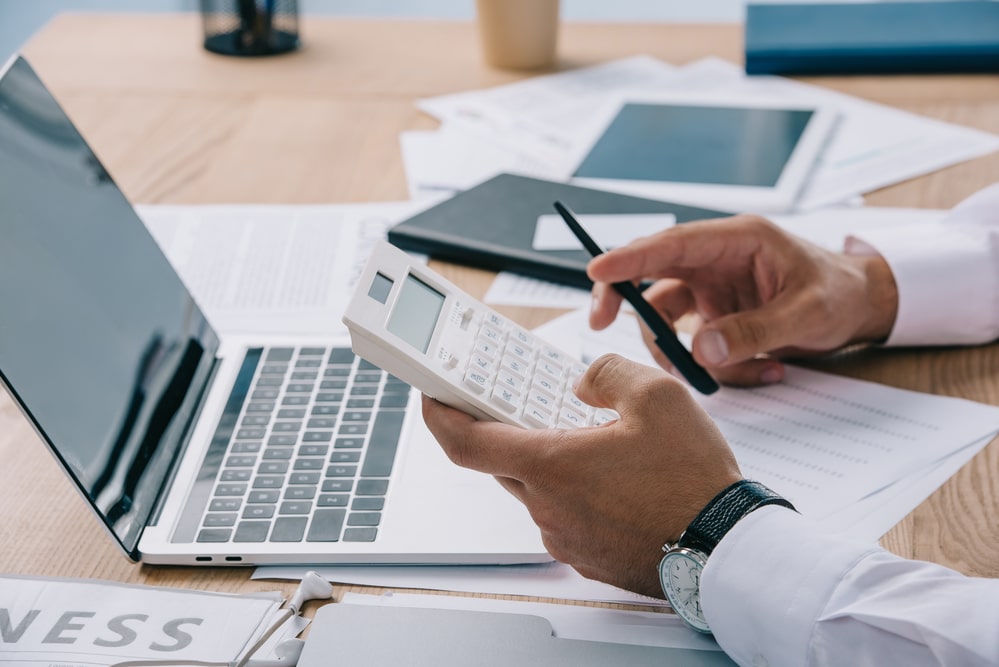Wholesaling is among the most popular exit strategies for entering the competitive world of real estate. With minimal capital and no experience, wholesaling offers new investors the quickest method for generating a healthy income in real estate. However, not all wholesale deals are created equal. Some deals are not worth your time or your money, and you need to be able to recognize them before you make your next move. To identify a good wholesale deal, it’s important to understand the fundamentals of what real estate wholesale is.
4 Warning Signs Of A Bad Wholesale Deal
Wholesaling is the act of buying a property, marketing it to a potential buyer, and then selling or assigning the contract to a buyer. Oftentimes, the wholesaler will never actually purchase the property but instead sell the home before the contract with the original seller closes. To gain a better understanding of real estate wholesale, and to distinguish the difference between a good and bad deal, here are four warning signs of a bad wholesale deal.
1. No Seller Motivation
The earliest sign of a bad wholesale deal is a distinct lack of motivation on behalf of the seller. As a foreshadowing of things to come, lack of motivation from the seller will hinder almost any deal — no matter how profitable it may be — and should be eliminated during the early stages of property analysis. Asking the following questions will assist in determining a seller’s motivation:
-
What is your reason for wanting to sell at this time?
-
How quickly are you looking to sell the property?
-
What is your ideal closing date?
-
What are your plans if the property doesn’t sell?
If the seller isn’t motivated, and the property doesn’t appear to have a significantly higher after repair value (ARV) compared to the price, it may not be a good deal. However, a last-ditch effort may be to make a very low offer over the phone to ensure you didn’t miss something. Jeffrey Zhou, Co-Founder & CEO of Fig Loans suggests that a video call can also be helpful. “If you are being rushed into a deal, which could still be legitimate, it is imperative that you speak to them face to face, even digitally. The bonus about video conferences is that the wholesaler is unable to use body language techniques to distract you. Hustlers aim to take your focus away and push you into the deal. This can be difficult via camera”.
[ Thinking about investing in real estate? Register to attend a FREE online real estate class and learn how to get started investing in real estate. ]

2. General Property Information Doesn’t Match
The majority of bad wholesale deals can be eliminated by simply minding your due diligence. The first step in evaluating a good wholesale deal is to gather the critical information about the property, including the seller’s situation, which can usually be found from either the seller, agent, or a third party. It’s important to know the property’s current status and whether it’s owner-occupied, vacant, or a rental. This will provide insight and better information on the seller’s motivation to sell.
Owner-occupied: This is when the seller is currently living in the property. Not only will they have a stronger emotional attachment to the home, but arranging buyer showings will be much more difficult.
Vacant:A vacant property is ideal for wholesalers for two reasons: for one, there is no one living in the property so it’s much easier to schedule buyer showings and two, this could be a sign of distress depending on the seller’s situation which means more motivation to sell.
Rental: It’s important to gather as much information as possible on rental properties. You should educate yourself on the amount of tenants, their rents, and lease terms for a potential property because the buyer will essentially inherit them.
To ensure information is correct, it’s important to obtain its property card. As the city’s record of information about a property, including ownership and all of its improvements, a property card will ensure there aren’t any discrepancies between what the agent or seller has told you.
3. No Equity/Not Enough Upside
The magic word when locating a wholesale deal is equity and securing this information beforehand will make it much easier to decide if you want to make the seller an offer. If there is little or no equity and the seller is current on his mortgage, there won’t be much you can do with this deal. To make a profitable deal that is worth your time, it’s crucial you consider the following:
-
What does the seller currently owe in total against the property?
-
Does that include all liens and mortgages?
-
Is the seller current on payments? If not, how many months behind?
If there is little or no equity and the seller is behind payments, then the only way for you to create equity is to negotiate a short sale with the bank. Remember that when wholesaling, there needs to be enough upside for you to get the property at your price point and get an investor to see the value.
4. ARV Isn’t High Enough
Valuing real estate accurately is a major cornerstone of success for any wholesaler. It’s also a make-it-or-break-it moment for wholesale deals.
When assessing the ARV (After Repair Value) of a potential wholesale property, it’s important to use a sales comparison approach–the litmus test to determine if a deal has potential. This approach will directly compare the potential property against three or four recent sales of similar properties and compare common significant property variables that warrant price adjustments. For wholesalers, using the 70 percent ARV rule is a great formula to measure profit margins when purchasing distressed real estate. It will calculate the maximum you can pay for a given property.
Remember, you are ultimately trying to determine what the subject property will be worth once it is fixed up. This is very different from trying to appraise the property in its “as-is” condition. As a wholesaler, you have to show a rehabber that they can profit from the transaction by adding value to the property.
To locate data on comparable properties, there is a slew of paid and free services such as Redfin and Zillow, as well as the Multiple Listing Service (MLS) for more detailed information. It’s also important to speak with a local real estate agent or expert in the area, as they are best at determining an accurate after repair value. To gauge the ARV of a property accurately, relying solely on online tools and websites is not recommended. Instead, a combination of online resources and due diligence is preferable and will ultimately provide the most comprehensive insight.
Calculating After Repair Value
If the property you plan to wholesale is in need of repairs, ARV is a crucial metric. With the right ARV, you can market the contract to investors and ultimately find your end buyer. While ARV is just one of several pieces of information they will need, it can greatly help when marketing a property to a fix and flip investor.
As mentioned above, the best way to determine ARV is by reviewing comparable properties. Look up similar properties in the area that have sold in the last six months, the sale prices will give you a better idea of what homes are going for in that area. This information can also help you identify upward or downward trends in your market, both of which are crucial to know when attempting to wholesale properties.
When reviewing comparable homes, consider the price per square foot as this can help provide a more accurate comparison. Review the average price per square foot of other homes in the area by dividing the sale price by the square footage. Then, take this number and multiply by the square footage of the property you are reviewing. The final number can help give you a starting point for ARV. There are a few different ways to calculate — or estimate — ARV. The goal is to get a rough estimate so you can better market your property.

Spotting A Good Wholesale Deal
Not that you know how to eliminate a bad deal, it can be helpful to understand which factors are positive indicators when wholesaling properties. Many investors will tell you to look for foreclosures, bank-owned properties, and distressed homes. Often these are properties that you will be able to secure for a low price and quickly sell to an investor with a different strategy.
Each time you consider a property, think about who you will assign the contract to. Are you targeting fix and flip investors? Consider running a few calculations on the potential returns of a flip in that area. These numbers can help you determine whether to get the property under contract, and ultimately how to market the deal to your end buyer.
Wholesaling is not a get-rich-quick business but rather an entrepreneurial path to achieving financial freedom. It will take time to learn the right indicators in your market. But, with some hard work, planning, time, energy, and resources, you too can find success by wholesaling.
Summary
Wholesaling is such a popular starting point for many real estate investors for good reason. The barriers to entry are low, and the potential ROI is significant when executed correctly. However, a successful wholesaler has to identify which opportunities to pursue and which to pass on. Seller motivation, property information, equity, and ARV are four of the most critical aspects of a wholesale deal to keep an eye on. The amount of value you get out of a deal is proportionate to that which you put into it, so perform your due diligence, and you will be well on your way to financial independence.
Ready to start taking advantage of the current opportunities in the real estate market?
Click the banner below to take a 90-minute online training class and get started learning how to invest in today’s real estate market!


